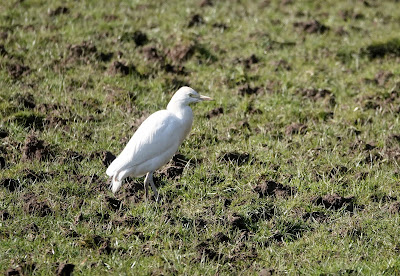This spring has seen an unprecedented arrival of two acrocephalus warblers; Marsh and Blyth's Reed. The former used to breed in Worcestershire and Kent through the seventies and eighties and widespread colonisation was anticipated, only for populations to crash and the footholds lost. Since then marsh warbler has remained a scarce migrant with intermittent breeding, although more regular in the last few years on the east coast. Perhaps widespread colonisation will happen at some point, although it remains a very rare bird in the northwest of England.
Blyth's Reed Warbler, on the other hand, was considered a major rarity even into the 90's. It has a more easterly distribution and has always been considered a vagrant. I've seen a couple, most recently on Fair Isle hanging in a mist net, but I also have a confession to make. I have no idea where I saw my first. I think it was probably Flamborough in 2007, but have no recollection of it. That either says a lot about BR warblers, or my memory, or both. Either way it's entirely why I need this blog.There were just a handful of records before 1990. Since then, the rise is numbers in the UK has been so large that it was taken off the official rarity list in 2014. The species is expanding it's range westwards, and this is coinciding with better understanding of identification (once thought near impossible) and better cameras and recording gear.
Regardless, it's a long time since I've seen either. Despite both turning up in large numbers, naturally none were local and/or visible. Many have been very elusive, just like the recent Runcorn acro (which I now think was a Marsh). Put all that togehter and I was definitely due a renewed encounter, so a showy singing Blyth's Reed Warbler in Lincolnshire for the last few days finally tempted me on 15th June. Malc and I set off at 5am and were on site by 7.30 and immediately onto the bird. It sang almost insessently for the next 2 hours and showed well at times, with prolonged signing from exposed perches. It was tricky to photograph as it was a very dull day, but a most enjoyable bird. The song is both impressive and distinctive, and included a lot of mimicry. Whilst we were on site it regularly belted out fine impressions of quail, bee-eater, long-tailed tit, great spotted woodpecker and chaffinch. Superb.
We headed off homewards, via Collingham in North Yorkshire where a particularly showy Rose-coloured Starling has lingered for a week or so. The weather had brightened up by the time we arrived and it performed beautifully - much better than last week's Frodsham bird. Red Kites overhead and singing Yellowhammers provided a backdrop, a very pleasant day out.






